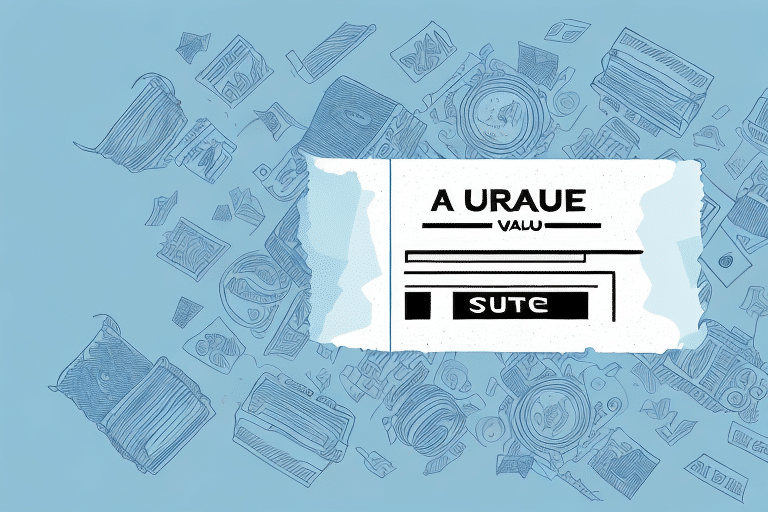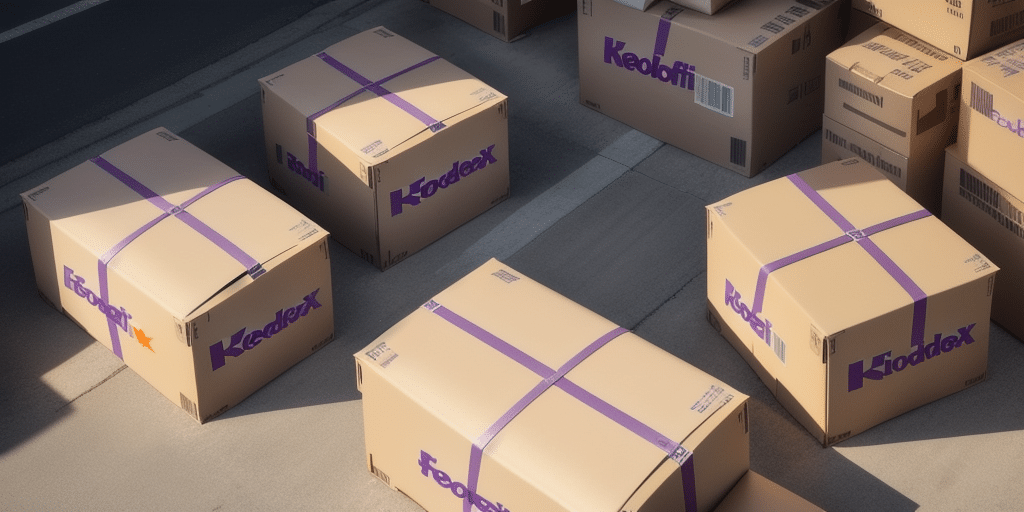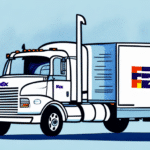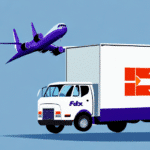Understanding the UPS Customs Value Surcharge
If you are an importer or exporter utilizing UPS for your shipping needs, it's crucial to understand the Customs Value Surcharge they impose. This fee is often overlooked and can unexpectedly increase your shipping costs. In this guide, we will explore what this surcharge entails, how it is calculated, strategies to minimize costs, and common mistakes to avoid.
What is the UPS Customs Value Surcharge?
The UPS Customs Value Surcharge is a fee applied to shipments undergoing customs clearance. This surcharge is a percentage of the total value of the goods being imported or exported and varies based on the country of origin or destination and the type of shipment. Importantly, this fee is in addition to standard customs duty fees.
Even if a shipment is marked as a gift or declared with a value of $0, the surcharge will still apply based on the estimated value of the goods. This fee is non-negotiable and cannot be waived by UPS or customs officials.
However, there are strategies to minimize the impact of the Customs Value Surcharge. By accurately declaring the value of goods and providing necessary documentation, shippers can potentially reduce the surcharge. Additionally, utilizing UPS's brokerage services may help streamline the customs clearance process and lower the surcharge amount.
Why Does UPS Charge a Customs Value Surcharge?
The primary reason UPS charges the Customs Value Surcharge is to cover the regulatory compliance and processing costs associated with customs clearance. Navigating the complex and time-consuming customs processes, which involve multiple agencies and regulations, incurs significant costs that the surcharge helps offset.
Moreover, the surcharge helps UPS mitigate risks related to international shipping. Varying customs regulations across countries require UPS to ensure compliance to avoid penalties or delays, and the surcharge contributes to managing these risks effectively.
The surcharge also enables UPS to offer additional services such as customs brokerage and consulting. These value-added services assist customers in navigating the intricate customs clearance processes, ensuring compliance with all regulations. The Customs Value Surcharge helps fund these enhanced service offerings.
Calculating the Customs Value Surcharge on Your UPS Shipment
The Customs Value Surcharge is calculated as a percentage of the total value of the goods being shipped. This percentage varies based on the country of origin or destination and the service type selected. For instance, shipping a package from the US to Canada using UPS Standard might incur a surcharge of approximately 2.7% of the total value of the goods, with a minimum fee of $4.25 and a maximum fee of $17.00.
To determine the exact surcharge amount, you can use the UPS online rate calculator, which provides precise estimates based on your shipment details. Remember, the Customs Value Surcharge is additional to other fees such as customs duty or taxes.
It's essential to differentiate the Customs Value Surcharge from customs duties and taxes. While customs duties are government-imposed taxes on imported goods varying by type and origin, taxes are fees based on the goods' value, typically paid by the shipment's recipient. Both are separate from the UPS surcharge.
If you are uncertain about the fees associated with your UPS shipment, contacting UPS customer service is recommended. They can provide detailed information on applicable fees and any specific requirements or restrictions for your shipment, helping you avoid unexpected costs.
Factors Affecting the Customs Value Surcharge
The amount of the Customs Value Surcharge is influenced by several factors:
- Country of Origin/Destination: Different countries have varying regulations and surcharge rates.
- Service Type: The UPS service selected (e.g., UPS Standard, UPS Worldwide Express) affects the surcharge percentage.
- Value of Goods: Higher-valued shipments incur higher surcharges.
- Type of Goods: Items like alcohol, tobacco, or hazardous materials may attract additional taxes or fees.
Given these variables, utilizing the UPS rate calculator is essential for obtaining an accurate surcharge estimate. Additionally, staying informed about changing customs regulations in your shipping destinations can help manage potential surcharge fluctuations.
Difference Between the Customs Value Surcharge and Other UPS Fees
The Customs Value Surcharge is distinct from other fees associated with UPS shipments:
- Customs Duties: Government-imposed taxes based on the type and origin of goods.
- Taxes: Fees based on the goods' value, typically paid by the recipient.
- Processing Fees: Additional charges for handling and processing shipments through customs.
Unlike these fees, the Customs Value Surcharge is directly tied to UPS's handling and compliance costs for customs clearance. It's also influenced by the declared value of the goods, meaning accurate reporting is crucial to avoid unexpected increases in the surcharge.
Countries Where the Customs Value Surcharge Applies
The Customs Value Surcharge applies to shipments passing through customs in numerous countries, including:
- Canada
- Mexico
- China
- Members of the European Union
- Brazil
- India
- Russia
Each of these countries has specific customs regulations and fees that may result in the application of the surcharge. It's advisable to verify with UPS whether the surcharge applies to your specific shipping destinations by consulting the UPS service guide.
Additionally, other fees such as duties and taxes imposed by destination countries' customs agencies may also apply. Researching and understanding all applicable fees before international shipping can help mitigate unexpected costs.
Tips for Reducing Your Customs Value Surcharge Costs
While the Customs Value Surcharge is mandatory, there are effective strategies to minimize its impact:
- Accurate Declaration: Ensure that the value of the goods is accurately declared to avoid discrepancies that could result in additional fees or delays.
- Select Appropriate Services: Opt for UPS services that offer reduced surcharge rates where possible. For example, premium services may have different surcharge structures.
- Complete Documentation: Provide all necessary documentation, including a detailed commercial invoice, to facilitate smooth customs clearance.
- Utilize Brokerage Services: UPS's brokerage services can streamline the customs process, potentially reducing surcharge amounts.
Working with a reputable customs broker or freight forwarder can also assist in preparing and submitting accurate documentation, further reducing the likelihood of incurring additional surcharges.
Common Mistakes to Avoid When Dealing with the Customs Value Surcharge
Avoid the following common mistakes to prevent unnecessary surcharge costs:
- Inaccurate Value Reporting: Under-reporting or over-reporting the value of goods can lead to fines, additional fees, or shipment delays.
- Ignoring Surcharge Variations: Assuming a uniform surcharge rate across all shipments can result in incorrect cost estimations. Always use the UPS rate calculator for accurate results.
- Overlooking Additional Fees: Failing to account for other fees such as duties and taxes can lead to unexpected costs.
- Incomplete Documentation: Missing or incorrect paperwork can cause shipment rejections or delays, increasing overall costs.
By meticulously managing these aspects, shippers can avoid common pitfalls associated with the Customs Value Surcharge.
Disputing a Customs Value Surcharge Charge
If you believe you have been incorrectly charged the Customs Value Surcharge, follow these steps to dispute the charge:
- Contact UPS Support: Reach out to UPS customer service with details of your shipment and the surcharge in question.
- Provide Documentation: Submit any relevant documentation that supports your claim, such as invoices or proof of declared value.
- Follow UPS’s Dispute Process: Adhere to UPS's established procedures for disputes, which may involve escalation to higher authorities within the company.
- Seek External Resolution: If UPS does not resolve the issue satisfactorily, consider escalating the matter to relevant regulatory bodies or seeking legal advice.
Maintaining clear and accurate records of all shipment details and correspondence with UPS will facilitate a smoother dispute resolution process.
Conclusion
The UPS Customs Value Surcharge is an additional fee charged for shipments undergoing customs clearance, calculated as a percentage of the goods' total value. Understanding how this surcharge works, the factors influencing it, and the differences from other fees is essential for effective international shipping management.
By accurately declaring goods' value, selecting appropriate shipping services, providing complete documentation, and utilizing UPS's brokerage services, shippers can minimize the impact of the Customs Value Surcharge. Avoiding common mistakes and knowing how to dispute incorrect charges further ensures cost-effective and smooth shipping operations with UPS.
For the most current information and detailed guidelines, always refer to the official UPS Help Center and consult reputable sources on international shipping regulations.




















